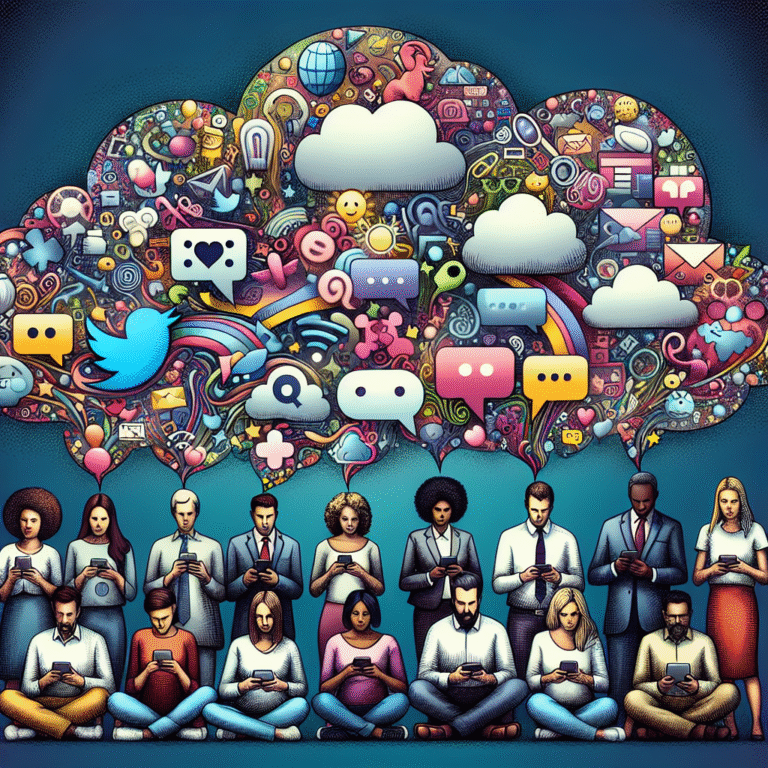
Introduction
In a world where communication often feels strained and relationships can be fragmented, understanding the science behind our connections has never been more crucial. Enter mirror neurons—the brain cells that may hold the key to empathy, compassion, and human connection. These fascinating neurons respond not just when we perform actions but also when we observe others doing the same. As we delve into the compelling narrative of Mirror Neurons and the Art of Connection: The Neuroscience Behind Empathy, we’ll uncover how these tiny cells play a monumental role in shaping our interactions, enhancing our relationships, and ultimately, forging a more empathetic society.
The Science of Mirror Neurons
What Are Mirror Neurons?
Mirror neurons were first discovered in the early 1990s by a team of researchers studying monkeys. They noticed that specific neurons fired both when the monkeys performed an action and when they observed the same action being performed by others. This sparked a revolution in neuroscience and offered insights into how humans might empathize with one another.
Key Takeaway: Mirror neurons trigger responses within ourselves when we observe the actions and emotions of others, inviting us into a shared experience.
The Brain’s Empathy Circuit
Empathy is often described as the ability to understand and share the feelings of another. This complex emotional response relies heavily on the brain’s empathy circuit, which includes regions activated by mirror neurons. When we see someone in distress, our mirror neurons help us resonate with their pain, compelling us to respond with compassion.
Table 1: Key Brain Regions Involved in Empathy
| Brain Region | Function |
|---|---|
| Anterior Insula | Processes emotional awareness and bodily states |
| Anterior Cingulate | Involved in emotional regulation and empathy |
| Mirror Neuron System | Activated during action observation and imitation |
The Role of Mirror Neurons in Everyday Life
Case Study: Educational Environments
In recent years, educators have begun to leverage the concept of mirror neurons in the classroom setting. For example, a teaching method that utilizes role-playing can engage students’ mirror neurons, facilitating a deeper understanding of empathy. Research shows that classrooms where students participate in emotionally charged activities—such as collaborative projects or peer teaching—show higher levels of social cohesion and understanding.
Analysis
This case illustrates how activating mirror neurons in educational contexts not only aids cognitive understanding but also enhances emotional intelligence among students.
Case Study: Therapy and Healing
Mirror neurons have also made their way into therapeutic practices. Therapists often utilize techniques like role-play in Cognitive Behavioral Therapy (CBT) to help clients process their emotions by allowing them to ‘experience’ situations from another person’s perspective. This method has shown encouraging results in treating conditions like PTSD and social anxiety.
Analysis
The therapeutic use of mirror neurons underscores their vital role in emotional healing, demonstrating that understanding others’ emotional states can accelerate personal growth.
Mirror Neurons and Social Connection
The Impact on Relationships
Understanding how mirror neurons work can lead to healthier and more fulfilling relationships. When partners mirror each other’s emotional states, they create bonds that enhance mutual understanding. This mirroring effect fosters intimacy and connection, making it easier for individuals to express vulnerability.
Case Study: Couples Therapy
In couples therapy, activating mirror neurons is often crucial in helping partners see each other’s perspectives. Techniques that promote emotional mirroring can lead to significant improvements in relationship satisfaction. Research from Dr. John Gottman’s work suggests that couples who engage in empathetic dialogue report higher levels of trust and intimacy.
Analysis
This finding emphasizes the importance of empathy in romantic relationships, showing how mirror neurons can be a transformative element in love and companionship.
Mirror Neurons and Community
Building Empathetic Communities
The implications of mirror neuron functionality extend beyond individual relationships; they have the potential to shape community dynamics. Initiatives that promote shared experiences—like team sports, community service, or support groups—activate the mirror neuron system and foster a spirit of cooperation and empathy among community members.
Case Study: Empathy Programs in Schools
Schools implementing empathy-focused programs, such as Restorative Justice or Social-Emotional Learning (SEL), foster a positive school climate. These programs emphasize understanding and respecting differing perspectives, generating a culture of kindness that sidesteps conflict and promotes harmony.
Analysis
The effectiveness of these programs in reducing behavioral issues highlights how collective empathy, sparked by mirror neurons, can lead to a more supportive and constructive community environment.
Enhancing Empathy through Mindfulness
The Intersection of Mindfulness and Mirror Neurons
Mindfulness practices, including meditation and focused breathing, have been shown to enhance the functionality of mirror neurons. Engaging in mindfulness allows individuals to become more aware of their own emotions, thereby increasing their capacity to empathize with others.
Case Study: Mindfulness in Corporate Training
Corporate environments that introduce mindfulness training report improved employee relations and enhanced teamwork. By fostering emotional awareness through mindfulness techniques, employees become better equipped to understand and support one another, thereby creating a more collaborative workplace.
Analysis
The success of integrating mindfulness into corporate training programs suggests that businesses can benefit from a workforce that is not only skilled but also emotionally intelligent, leading to higher productivity and job satisfaction.
The Broader Implications of Mirror Neurons
Mental Health and Psychological Disorders
The study of mirror neurons can also offer insights into various psychological disorders. Conditions like autism spectrum disorder (ASD) often involve differences in empathy and social connection. Understanding how mirror neurons function could pave the way for new interventions that specifically target these empathic deficits.
Cultural Perspectives on Empathy
Different cultures may engage mirror neurons in unique ways, affecting how empathy is expressed and perceived. For instance, collectivist societies may promote communal experiences that activate mirror neurons, while individualistic cultures might focus on personal achievement, affecting the overall levels of empathy in social interactions.
Conclusion
The exploration of Mirror Neurons and the Art of Connection: The Neuroscience Behind Empathy reveals a complex interplay between biology and social interaction. By understanding the mechanisms at work behind empathy and connection, we can foster greater compassion in our personal relationships, communities, and workplaces. The potential for growth is vast—whether through education, therapy, mindfulness, or community initiatives—every step toward understanding mirror neurons brings us closer to a more empathetic society.
FAQs
1. What are mirror neurons?
Mirror neurons are specialized brain cells that activate when an individual performs an action or observes someone else performing that same action. They play a significant role in empathy and social behavior.
2. How do mirror neurons facilitate empathy?
When we see someone expressing emotion, our mirror neurons activate, allowing us to resonate with their feelings. This resonance fosters understanding and a shared emotional experience.
3. Can mirror neurons be trained or enhanced?
Yes, practices such as mindfulness and empathetic engagement can enhance the functioning of mirror neurons, improving our capacity for empathy.
4. What role do mirror neurons play in education?
Mirror neurons can enhance learning experiences by facilitating empathy and social skills, especially through role-playing and collaborative activities in the classroom.
5. How does culture influence the activity of mirror neurons?
Cultural contexts shape how empathy is expressed and engaged, affecting the activation of mirror neurons through shared communal experiences or individual pursuits.
By comprehensively exploring the relationship between mirror neurons and empathy, this article aims not only to inform but also to inspire action toward building deeper connections in our everyday interactions. We can all contribute to a more empathetic world by recognizing the remarkable power of these tiny cells within us.

















